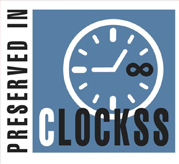Luis M. Miranda-Rosales, Instituto Nacional de Enfermedades Neoplásicas, Lima, Perú
Eduardo J. Kcam-Mayorca, Hospital de Emergencias de Villa el Salvador, Lima, Perú
Jorge Luna-Abanto, Instituto Nacional de Enfermedades Neoplásicas, Lima, Perú
Henry Malpartida-Saavedra, Hospital Nacional Sergio Bernales, Lima, Perú
Claudio Flores-Flores, Departamento de Estadística Universidad Nacional Mayor de San Marcos, Lima, Perú
Introduction: Acute appendicitis is the main cause of emergency surgical care. Post-operative patients with complicated acute appendicitis present complications, many of them expected. The use of drains is one of the measures to prevent these complications; however, recent meta-analyzes do not justify this therapeutic measure. This study evaluates the relationship between use and non-use of drains, post-operative complications in patients with complicated peritonitis secondary to acute appendicitis. Methods: A retrospective observational cohort study was conducted. The outcomes were analyzed by Chi-square test and Student’s t-test; Fisher exact test was performed. Results: The average operating time was 1.46 h (1.0-2.5) and 1.66 (1-3) for patients without drains and with drains, respectively, the difference was significant (p = 0.001). Post-operative fever was more prevalent in group with a drains odds ratio (OR) 3.4 (confidence interval [CI] 95% 1.4-7.9). The mean time of hospitalization was 7.3 (3-20) and 8.8 days (3-35) for patients without drains and with drains, respectively. (p = 0.01). The Chi-square analysis was significant for evisceration Grade III and residual collection p = 0.036, OR not evaluable. Reoperation was not significant among both groups, p = 0.108 OR 6.3 (CI 95% 0.6-62.4). Conclusions: There is a relationship between the non-use of drains and collections and evisceration in post-operative patients with open appendectomy, by complicated acute appendicitis.
Palabras clave: Drains. Acute appendicitis. Secondary peritonitis.



